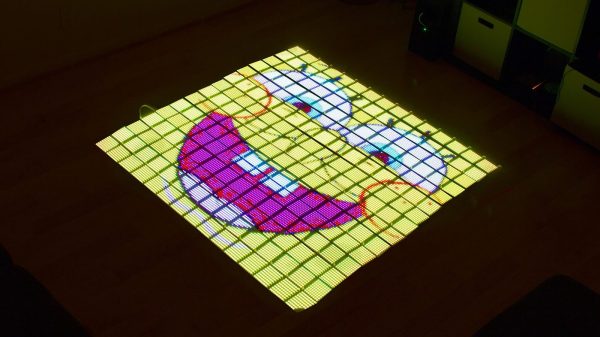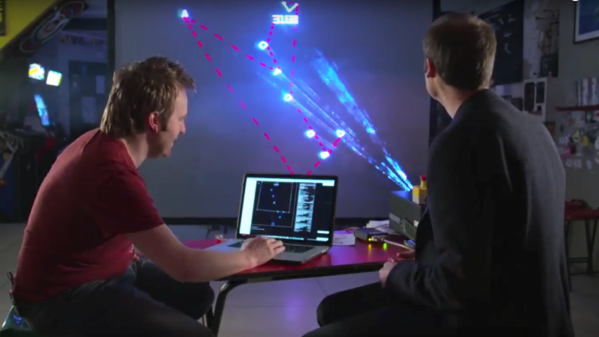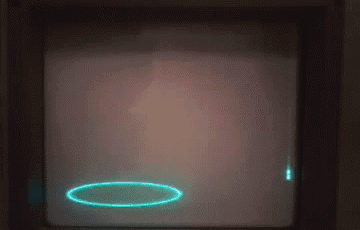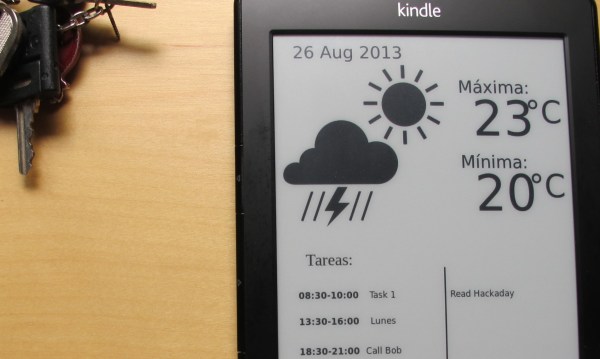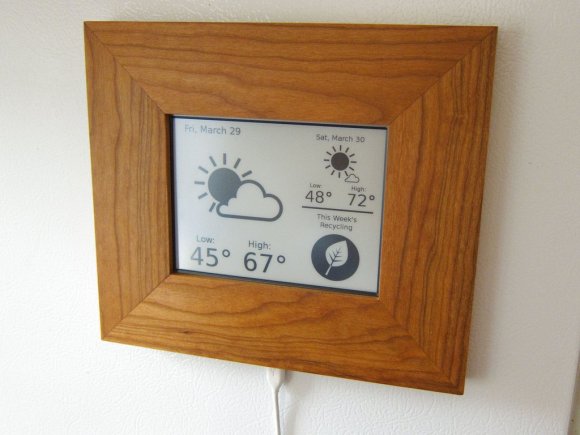Is [SpongeBob SquarePants] art? Opinions will differ, but there’s little doubt about how cool it is to render a pixel-mapped time-lapse portrait of Bikini Bottom’s most famous native son with a roving light painting robot.
Inspired by the recent trend of long exposure pictures of light-adorned Roombas in darkened rooms, [Hacker House] decided to go one step beyond and make a lighted robot with less random navigational tendencies. A 3D-printed frame and wheels carries a pair of steppers and a Raspberry Pi. An 8×8 Neopixel matrix on top provides the light. The software is capable of rendering both simple vector images and rastering across a large surface to produce full-color images. You’ll notice the careful coordination between movement and light in the video below, as well as the impressive turn-on-a-dime performance of the rover, both of which make the images produced so precise.
We’ve covered a lot of light-painting videos before, including jiggering a 3D-printer and using a hanging plotter to paint. But we haven’t seen a light-painter with an essentially unlimited canvas before. We’d also love to see what two or more of these little fellows could accomplish working together.
Continue reading “Light-Painting Robot Turns Any Floor Into Art”

